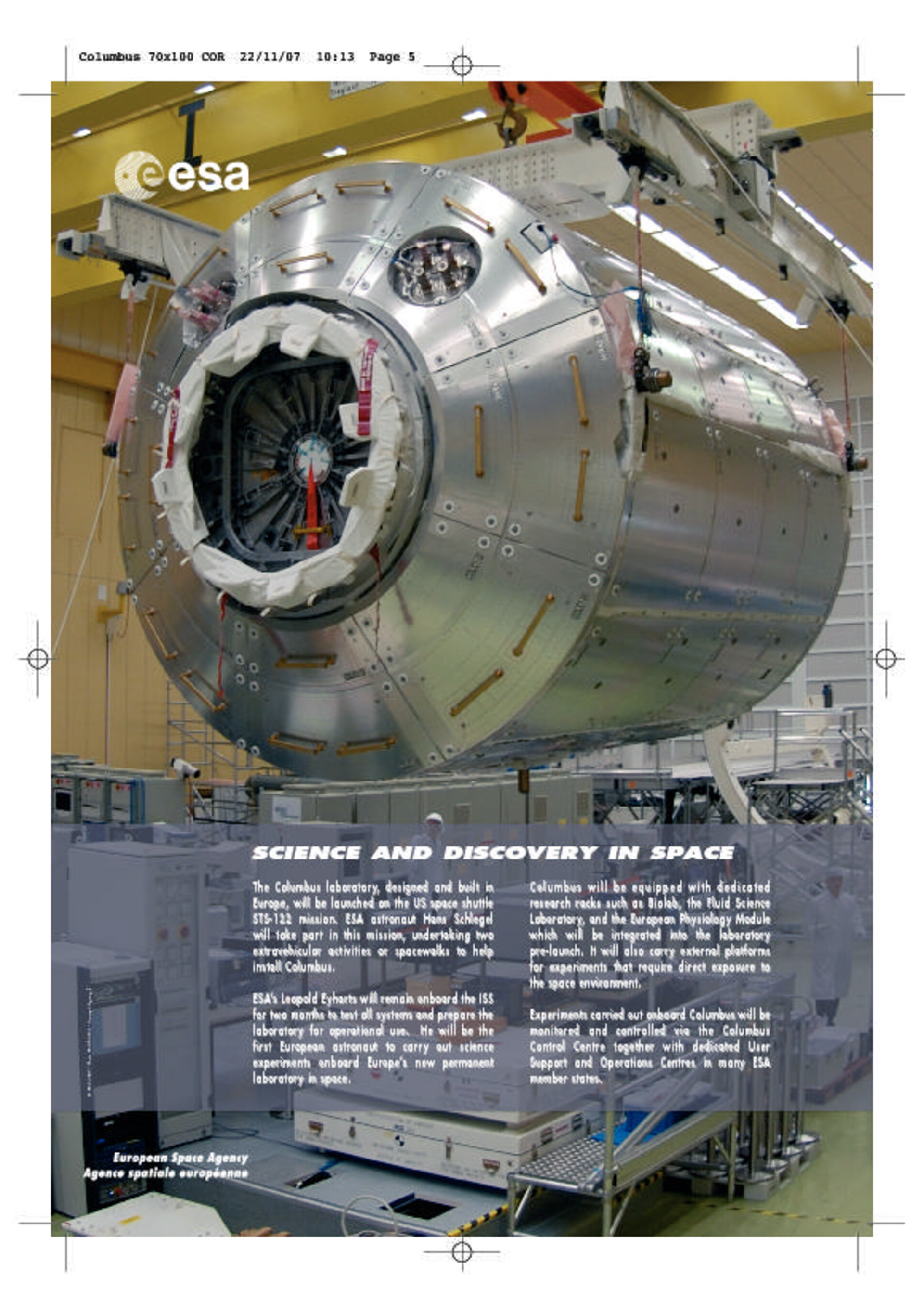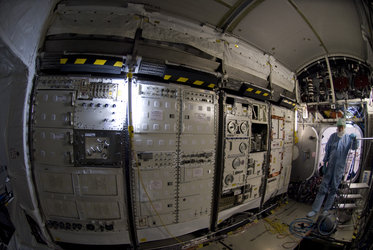

Poster - Science and discovery in Space
Science and discovery in space
The Columbus laboratory designed and built in Europe, will be launched on the US space shuttle STS-122 mission. ESA astronaut Hans Schlegel will take part in this mission, undertaking two extravehicular activities or spacewalks to help install Columbus. ESA’s Leopold Eyharts will remain onboard the ISS for two months to test all systems and prepare the laboratory for operational use. He will be the first European astronaut to carry out science experiments onboard Europe’s new permanent laboratory in space.
Columbus will be equipped with dedicated research racks such as Biolab, the Fluid Science Laboratory, and the European Physiology Module which will be integrated into the laboratory pre-launch. It will also carry external platforms for experiments that require direct exposure to the space environment.
Experiments carried out onboard Columbus will be monitored and controlled via the Columbus Control Centre together with dedicated User Support and Operations Centres in many ESA member states.





